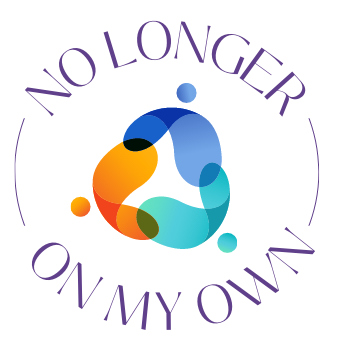Resources for Indigenous Peoples
The No Longer on My Own (NOLOMO) project is funded by Women and Gender Equality Canada and the Nova Scotia Advisory Council on the Status of Women.
Collections
Overview
Family violence is a critical issue affecting communities worldwide, but Indigenous populations face unique challenges and disproportionately higher rates of violence. In Canada, Indigenous women are nearly twice as likely to experience violence from a partner than non-Indigenous women. In addition, the intersecting impacts of settler colonialism, historical trauma, systemic racism, and socio-economic disparities exacerbate the barriers Indigenous survivors face in accessing justice and support. This underscores the necessity for a dedicated collection of resources tailored specifically to Indigenous peoples.
Quick Links
Fact Sheet: Root Causes of Violence Against Aboriginal Women and the Impact of Colonization:
This fact sheet from the Native Women’s Association of Canada outlines the systemic factors leading to violence against Indigenous women in Canada.
A Brief History of the Marginalization of Aboriginal Women in Canada:
This website offers an outline of the early histories of gender relations between Indigenous peoples and settlers, exploring how initial colonial assumptions resulted in the drastic alteration of women’s influence and social systems
Gender-based Violence (GBV) Against Indigenous Peoples in Canada: A Snapshot:
This infographic provides a high-level overview of gender-based violence against Indigenous peoples.
Aboriginal Women and Family Violence:
This is a Government of Canada report based on a research study of Indigenous women and the professionals who work with them on the issue of family violence, specifically intimate partner violence against women.
Colonization, Oppression and Racism: Understanding Violence Against Indigenous Women who are Older:
This webinar considers the factors behind violence against Indigenous women and its impact on Indigenous communities.
The crisis of missing and murdered Indigenous women and girls (MMIWG) in Canada is an urgent human rights issue that requires dedicated attention and action. Indigenous women, girls and 2SLGBTQQIA people face a significantly higher risk of violence, disappearance, and death compared to their non-Indigenous counterparts, with rates of homicide being nearly seven times higher. This collection of resources aims to foster understanding and raise awareness of the need for justice and safety for Indigenous women and girls.
National Inquiry
This report summarizes the findings of the National Inquiry into Missing and Murdered Indigenous Women and Girls, investigating the root causes behind Canada’s staggering rates of violence against Indigenous women, girls and 2SLGBTQQIA people. The two-volume report calls for transformative legal and social changes to resolve the crisis that has devastated Indigenous communities across the country.
Calls for Justice: National Inquiry into Missing and Murdered Indigenous Women and Girls:
This report outlines the calls for justice resulting from the National Inquiry into Missing and Murdered Indigenous Women and Girls.
Missing and Murdered Indigenous Women, Girls, and 2SLGBTQQIA+ People National Action Plan:
This Action Plan is a response to the Final Report of the National Inquiry into Missing and Murdered Indigenous Women and Girls and the Métis Perspectives on Missing and Murdered Indigenous Women, Girls and LGBTQ2S+ People. It was developed to drive transformative change to end systemic racism and violence against Indigenous women, girls, and 2SLGBTQQIA+ people
2022 Progress Report on the Missing and Murdered Indigenous Women and Girls National Action Plan:
This is the first progress report achieved under the National Action Plan, recounting actions taken in the first year following the release of the National Action Plan, providing insight into progress and gaps and what’s needed next on the path to transformational change.
Resources
This page from Assembly of First Nations highlights the alarming statistics of violence against Indigenous women and advocates for the full implementation of the MMIWG National Inquiry’s 231 Calls for Justice and the National Action Plan. It also links users to the AFN’s initiatives, including support for survivors, prevention services, and healing. The page also details the regional engagement strategy and the importance of the National Inquiry’s findings and recommendations.
CIRNAC: Missing and murdered Indigenous women, girls and 2SLGBTQI+ people:
This page from Crown-Indigenous Relations and Northern Affairs Canada provides information on efforts to address the crisis of missing and murdered Indigenous women, girls, and 2SLGBTQI+ people. It outlines the Federal Pathway, national action plan, and related programs and initiatives. Resources for support services, including mental health and community-based support, are also highlighted. It also offers links to related reports and resources.
Native Hope: Missing and Murdered Indigenous Women:
The Native Hope page on Missing and Murdered Indigenous Women (MMIW) discusses the ongoing crisis of Indigenous women and girls being taken or murdered in the US and Canada. From a primarily American perspective, it highlights the lack of media and law enforcement attention, the impact on families, and the systemic issues contributing to this crisis. The page also explains the significance of the MMIW Red Hand symbol and provides statistics, historical context, and information on awareness days and advocacy efforts.
Through an investigation of grassroots initiatives for missing and murdered Indigenous women, girls, and Two-Spirit+ (MMIWG2S+) people, this article shows how Indigenous women are central to mobilizing against a colonial, racialized, and gendered violence.
This page provides an archive of APTN’s coverage on MMIWG2S+.
This training video provides critical information about how Indigenous families and communities are impacted by abuse against women. Members of the Indigenous community who work with women as well as key community members share their experiences and inspiring messages emphasizing the importance of community involvement in putting an end to domestic violence.
Home Fire: Ending the Cycle of Family Violence
This video explores family violence and restorative justice from an Aboriginal perspective. Featuring commentary from Elders, community leaders, and members of the western justice system, Home Fire examines the colonization of Canada, historic trauma, the western justice system and grassroots healing programs in Aboriginal communities.


